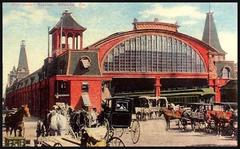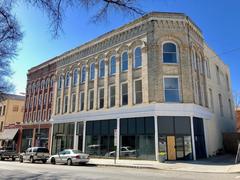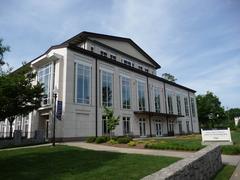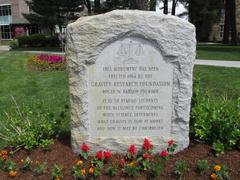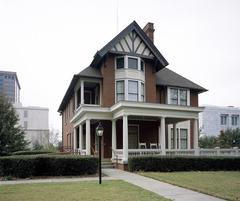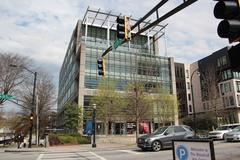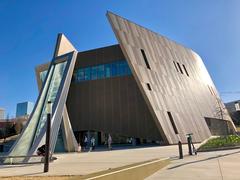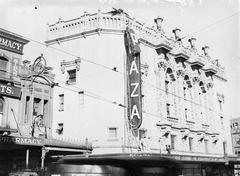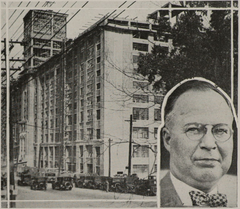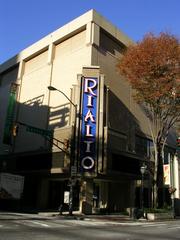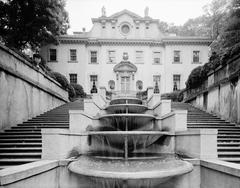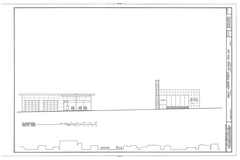
Georgia State Capitol: Visiting Hours, Tickets, and Historical Sites in Atlanta
Date: 03/07/2025
Introduction
Nestled in the heart of downtown Atlanta, the Georgia State Capitol is a living testament to the state’s rich political heritage and stunning architectural legacy. Completed in 1889, this neoclassical landmark serves as the active seat of government and a dynamic museum, inviting visitors to explore pivotal moments in Georgia’s history, admire its gold-domed roof, and engage with its diverse cultural exhibits. Whether you’re a history enthusiast, architecture lover, or a curious traveler, this guide offers comprehensive details on visiting hours, tours, ticketing, accessibility, and travel tips to help you plan an enriching visit to one of Atlanta’s most significant historical sites.
For up-to-date details and visitor resources, consult the official Georgia State Capitol website, Discover Atlanta, and the Georgia Capitol Museum.
Table of Contents
- Introduction
- Origins and Construction
- Architectural Significance
- Key Historical Events
- Visitor Information
- Role in Georgia’s Civic and Cultural Identity
- Notable Features and Museum Collections
- The Capitol in Contemporary Atlanta
- Travel Tips & Nearby Attractions
- Frequently Asked Questions (FAQ)
- Summary & Resources
Origins and Construction
Following the relocation of Georgia’s capital from Milledgeville to Atlanta in 1868, the decision to build a new capitol reflected both the city’s emergence as a commercial powerhouse and the state’s post-Reconstruction ambitions. In 1883, a statewide architectural competition resulted in the selection of Chicago architects Willoughby J. Edbrooke and Franklin P. Burnham, whose neoclassical design paid homage to the United States Capitol. Construction began in 1884 on the site of Atlanta’s former city hall and courthouse, culminating in the Capitol’s dedication on July 4, 1889 (Discover Atlanta).
Architectural Significance
Exterior Features and Materials
The Georgia State Capitol stands as a striking example of neoclassical and Renaissance Revival architecture, featuring a symmetrical façade, stately Corinthian columns, and a 272-foot-high gold dome. The dome, originally clad in tin, was gilded with native Georgia gold leaf in 1958 to commemorate the state’s gold rush and was later regilded to maintain its luster (Georgia Encyclopedia). Indiana limestone and Georgia marble adorn the exterior and interior, symbolizing both durability and state pride. The Capitol’s grounds are landscaped with oaks, elms, and magnolias, and feature notable sculptures such as the equestrian statue of Lieutenant General John B. Gordon and the statue of Governor and Mrs. Joseph Brown (SAH Archipedia).
Interior Design and Innovations
Inside, a grand rotunda rises 75 feet, illuminated by clerestory windows and encircled by galleries supported by composite columns. Notable features include marble floors, ornate plasterwork, stained glass, and the House and Senate chambers paneled in native oak. The Capitol was among Atlanta’s first buildings to feature elevators, centralized steam heat, and combination gas and electric lighting—testaments to the state’s commitment to progress (SAH Archipedia).
Key Historical Events
Since its completion, the Capitol has served as the epicenter of Georgia’s legislative, executive, and judicial activities. It has hosted significant milestones, including gubernatorial inaugurations and the passage of landmark legislation. The site played a pivotal role during the Civil Rights Movement, serving as a gathering ground for demonstrations, notably by Atlanta University Center students advocating for desegregation in 1960 (Explore Georgia). Regular renovations, especially in the 1990s, have preserved both the historic character and modern functionality of the building.
Visitor Information
Visiting Hours & Tickets
- Open: Monday–Friday, 8:00 AM–5:00 PM (closed weekends and state holidays)
- Admission: Free; no tickets required for general entry
- Photo ID: Required for visitors aged 18 and above
- Security: All visitors pass through metal detectors and bag screening (Georgia Civics PDF)
Tours & Special Events
- Self-Guided Tours: Available to individuals and small groups any time during open hours. Brochures can be picked up onsite or printed from the Capitol Museum website.
- Guided Tours: For groups of 10 or more, schedule by calling 404-463-4536 or emailing [email protected]. Tours last 45–60 minutes, with additional time recommended for museum exploration.
- Special Events: During legislative sessions or public ceremonies, certain areas may be restricted; check the events calendar in advance (UGA Capitol Museum).
Accessibility & Parking
- Accessibility: Ramps, elevators, and accessible restrooms are available throughout the building.
- Parking: Public lots and decks are located nearby, including the 33 MLK Jr Dr lot and GSU “G” Deck. Electric vehicle charging is available in select lots (Georgia Building Authority).
- Public Transit: MARTA buses and trains serve the area. Plan your route via the MARTA website.
Role in Georgia’s Civic and Cultural Identity
The Capitol houses the offices of the Governor, Lieutenant Governor, Secretary of State, and both chambers of the General Assembly. As an educational institution, the Georgia Capitol Museum preserves more than 1,000 artifacts, historic flags, and memorabilia, engaging visitors in the state’s political and civic development (Georgia Capitol Museum). The building and its grounds commemorate diverse figures and events, reflecting the multifaceted history of Georgia’s people and their pursuit of democracy.
Notable Features and Museum Collections
- Gold Dome: Gilded with Dahlonega-sourced gold, topped by the statue of Miss Freedom, symbolizing liberty.
- Rotunda: Central gathering space for ceremonies, adorned with marble, stained glass, and portraits.
- Museum Exhibits: Historic flags, legislative documents, and the original 1799 Great Seal of Georgia are on display (Georgia Capitol Museum).
The Capitol in Contemporary Atlanta
Located near the Martin Luther King Jr. National Historical Park, Centennial Olympic Park, and the Atlanta History Center, the Capitol is a central stop for those exploring Atlanta’s vibrant historical landscape (Explore Georgia). The surrounding area offers additional attractions, dining, and public gathering spaces like Liberty Plaza.
Travel Tips & Nearby Attractions
- Best Times to Visit: Early mornings or late afternoons on weekdays are typically less crowded.
- Food: No food services inside, but cafeterias and restaurants are located within easy walking distance (e.g., Waffle House, Caribou Coffee, and local eateries).
- Dress Comfortably: Wear good walking shoes and bring a water bottle, especially in warmer months.
- Photography: Allowed in most public areas; restrictions apply during legislative sessions and in certain rooms.
- Nearby Sites: Explore the Georgia Railroad Freight Depot, Underground Atlanta, and local entertainment venues (Tourist Checklist).
Frequently Asked Questions (FAQ)
What are the Georgia State Capitol visiting hours?
Monday–Friday, 8:00 AM–5:00 PM.
Is there an admission fee?
No, admission and tours are free.
How can I book a guided tour?
Call 404-463-4536 or email [email protected].
Is the Capitol accessible to visitors with disabilities?
Yes, with ramps, elevators, and accessible restrooms available.
Can I take photos inside?
Yes, in most public areas. Restrictions may apply during official events.
Is parking available nearby?
Yes, several public lots and decks are within walking distance.
Are there food options nearby?
Yes, several cafeterias and restaurants are in the vicinity.
Summary and Resources
The Georgia State Capitol is more than a government building—it’s a living museum, a site of civic engagement, and a symbol of Georgia’s enduring legacy. Free admission, accessible amenities, and proximity to other Atlanta landmarks make it an essential stop for locals and visitors alike. Before visiting, always check the latest information and event schedules via official resources.
Official Resources and Further Information
- Georgia State Capitol Official Site
- Georgia Capitol Museum
- Discover Atlanta
- SAH Archipedia
- Georgia Encyclopedia
- UGA Capitol Museum Visit
- Georgia Civics PDF
- Georgia Building Authority Parking
- MARTA Transit
- Tourist Checklist
For personalized travel tips, virtual tours, and the latest updates, download the Audiala app and follow our social media channels. Enhance your Atlanta adventure with our guides to the city’s top museums, parks, and historical sites.












